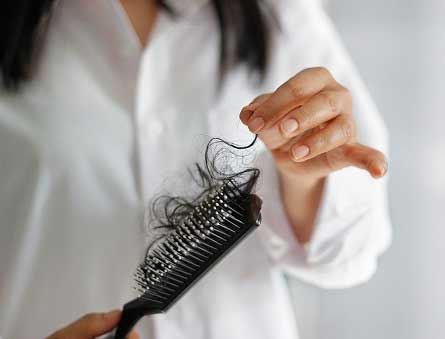Understanding Hair Loss – Hair loss is the excessive shedding of hair. This condition can result in thinning hair or baldness, either temporarily or permanently. Hair loss can also occur gradually or suddenly.
The normal number of hair is around 100,000 strands, and will fall out or fall out around 50-100 strands every day. This is a normal condition, because the hair that falls out will be replaced with new hair.
Normal hair growth can be divided into 3 phases, namely the anagen phase, the catagen phase, and the telogen phase. In the anagen phase or growth phase, hair will grow and last for 2–8 years.
For 2-3 weeks, hair will enter the catagen phase or transition phase. In this phase, hair does not grow actively. After that, hair will enter the telogen phase or resting phase. In this phase, hair will fall out and will be replaced with new hair 2-3 months later.
If this hair growth phase is disturbed, hair will fall out and can lead to baldness. In addition, if more hair enters the telogen phase than normal, hair can also fall out excessively. This condition is called telogen effluvium .
Although hair loss is more common in teenagers and adults, children can also experience it.
Causes of Hair Loss
Many factors can cause the hair growth cycle to be disrupted, resulting in hair loss. Sudden hair loss can occur due to various factors , namely:
- Autoimmune diseases, for example alopecia areata
- Chemotherapy side effects
- Hormonal changes, for example during childbirth or due to polycystic ovary syndrome ( PCOS )
- Side effects of medications, such as immunosuppressants , gout medication, and high blood pressure medication.
Meanwhile, gradual hair loss is most often caused by genetic or hereditary factors. In addition, unhealthy diets, such as lack of protein and iron, can also reduce the fertility of hair roots, causing hair loss.
Hair Loss Symptoms
Symptoms of hair loss depend on the cause. They can appear suddenly or gradually. Some of these symptoms are:
- Thinning hair on the top of the head (crown)
- Tapered
- Even hair thinning on the head
- Hair loss all over the body
Hair Loss Diagnosis
Hair loss diagnosis begins with questions and answers regarding the symptoms experienced by the patient, as well as the patient’s and family’s medical history. After that, the doctor will perform a physical examination of the hair and scalp.
During a physical examination, the doctor will gently pull the patient’s hair to see how much hair has fallen out. If necessary, the doctor can perform additional examinations, such as:
- Blood tests, to detect conditions that cause hair loss
- Scalp biopsy, to detect whether there is an infection that can cause hair loss.
Hair Loss Treatment
Treatment for hair loss depends on the cause. In hair loss caused by hormonal changes during childbirth, hair density will return to normal within 6-9 months after delivery.
In stress-related hair loss, the doctor will advise the patient to undergo counseling and psychotherapy. While if hair loss occurs due to poor nutritional status, the doctor will provide additional advice on nutritional intake and multivitamins.
Other medical treatments can be done when someone starts to feel their appearance is disturbed by hair loss. Some treatment methods that can be done to overcome hair loss are:
- Applying topical medication to the scalp containing minoxidil
- Administration of oral medication containing finasteride or spironolactone
- Use a special shampoo for hair loss
- Hair grafting or hair transplantation, to overcome baldness due to hair loss
Hair Loss Complications
Untreated hair loss can interfere with sufferers in carrying out daily activities. Thinning hair and bald spots caused by hair loss can be seen by others, making sufferers feel embarrassed.
If this condition is left untreated, sufferers can experience complications in the form of decreased self-confidence, anxiety disorders, and even depression.
Hair Loss Prevention
Hair loss cannot always be prevented, especially those related to hereditary factors. However, preventing hair loss can start from hair care with a series of shampoos containing Argan cream and avocado essence that help strengthen and maintain healthy hair.
In addition to hair care, there are several efforts that can be made to maintain healthy hair to prevent hair loss:
- Don’t dye your hair often .
- Protect your hair from direct exposure to sunlight by wearing a hat and umbrella when the weather is hot.
- Comb your hair properly.
- Choose hair care products that suit your scalp and hair type.


No Responses